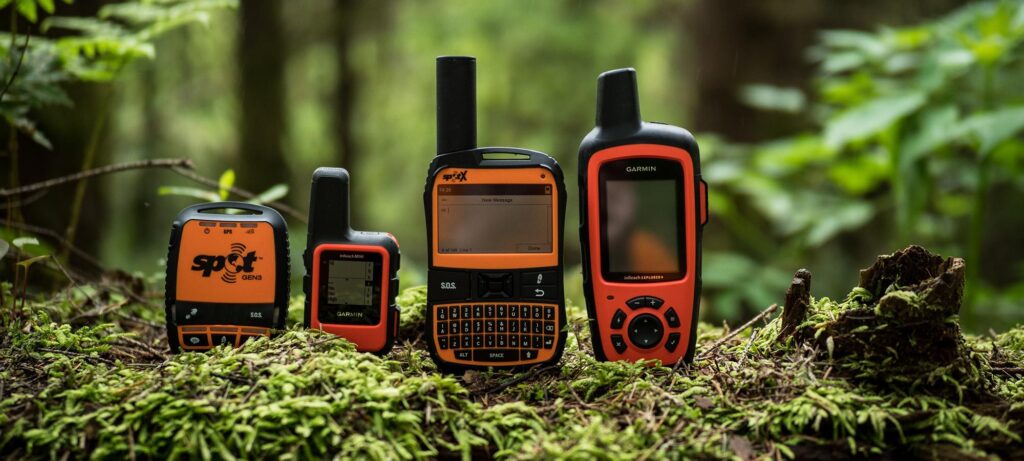
What You Need To Know About Satellite Messengers
For those who enjoy boondocking in the backcountry away from the crowds, or drive through sections of the country where cell coverage isn’t always reliable, investing in a satellite messenger may allow some peace of mind for your family and friends in the event of an emergency or unexpected problem.
There are several satellite messengers on the market now, and satellite technology has improved greatly over the years. And since they use the Iridium and Globalstar low-earth-orbit satellites rather than the cellular grid, all that is needed to send a message is a clear view of the sky.
The best satellite messengers
Satellite messenger units are made by Garmin InReach and SPOT Trackers have consistently been in the top-performing ratings, but newer units like Bivystick and Somewear Global Hotspot are offering some unique functionality.
Satellite messengers require the purchase of both a unit and a service subscription. The different units offer a variety of functions and usability, but generally offers the ability to send status updates with location information, tracking information at a selected increment of time, and an SOS/distress option that will immediately dispatch emergency crews in the event of a life-threatening emergency. Some units allow two-way communication, weather reports, or GPS navigation features as well. Satellite messenger units range in cost from $150 to $500.
Subscription service costs can vary widely and depend a lot on the unit you have purchased and the add-on functions you may want to include. Generally, you are looking at subscriptions between $200 and $400 per year. Some offer monthly service if you are planning a one-time trip. Some outdoors stores also offer satellite messenger rentals so that you can try units with different options before buying, or if you are doing a single trip.
Use them in case of emergencies
When using any satellite messenger unit, it is important to know when to send an SOS distress call. An SOS call will immediately be sent to local search and rescue (SAR) resources who will begin responding to the location sent by your satellite messenger unit.
Activating the SOS call should only be used for a life-threatening situation, or when you have no means of self-rescuing. Many states have laws against frivolous rescue calls, and it may end up costing you a lot of money.
If you do initiate an SOS distress call, it may take several hours for SAR teams to receive your call. SAR response time once the call is received depends on many factors, such as weather, terrain, and other concurrent emergencies utilizing the limited resources available for a rescue. This all means that while SAR will be notified, it may take a long time for them to get to your location and to get you to safety.
Although the first step in enjoying the backcountry is not to get lost, satellite messengers are a great tool to have for your adventures, and as a way to let friends and family know your status and location, as well as a way to initiate a rescue if it comes to that.

I have Garmin InReach. It is great and the yearly plan is all of $14 a month for everything anyone could need in an emergency usage situation. It is a cursor “type as you go” method, so not like texting, but in an emergency it would do the job fine.
Should be mandatory for anyone hiking in backcountry. Some places will loan you one so there is no excuse to be lost and have SAR looking for you for days. I lived in Portland for 11 years and it seemed that at least once a month they were searching for someone ill prepared on MT Hood and around the Columbia Gorge.
I have a Garmin inreach and absolutely love it. It has worked flawlessly for me and I recommend one for anyone the may be out of cell phone service. The unit allowed me to communicate with my doctor when I was several days out to sea. Plus it allows me the ability to check in with family regardless of where I am, if I can see the sky I can communicate with them. I have never needed the SOS function, and hopefully I never do, but just having it gives me and my family peace of mind
I would not pay money for anything Garmin. There might be a warranty on paper, but its not worth the cost of the ink to print it. I had a Garmin watch that broke 3 days before the warranty was up. Garmin claimed it was out of warranty and refused to warranty it. The case broke were the band attached. There is a very tiny loop around the screw that holds the band. The loop is weak, and is not strong enough to hold up under normal use. It was actually under my jacket sleeve when it broke. No impact, no stress, it just gave out. Because it is part of the case, there is no reasonable way to fix it. Too bad, but what a waste of money. You assume a large company like Garmin would actually stand behind their warranty, but they don’t.
If you think you need one of these, maybe you should reconsider heading out to those locations. An old saying applies: An ounce of prevention is worth a pound of cure.